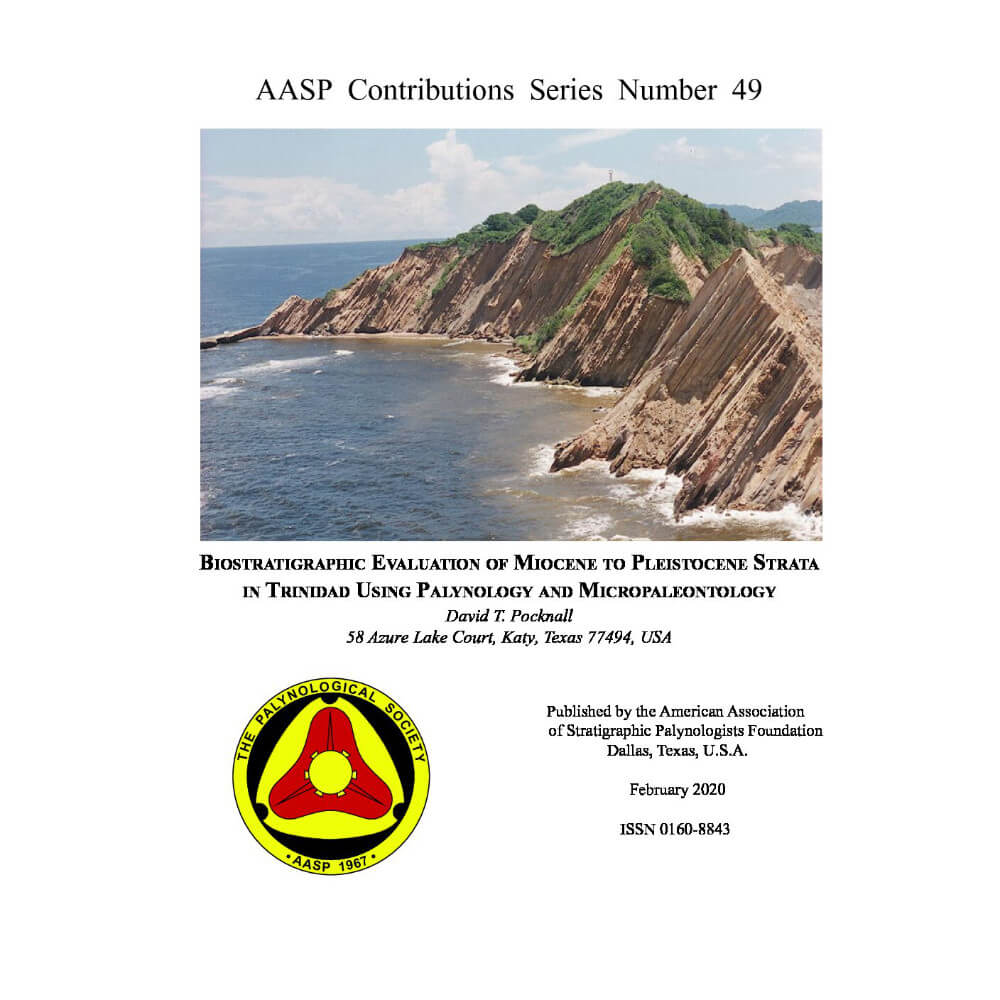Contributions Series Nr. 49
$35.00 – $45.00
Hardcopy & PDF available
Biostratigraphic Evaluation of Miocene to Pleistocene Strata in Trinidad Using Palynology and Micropaleontology
David T. Pocknall
2020
122 pp.
Description
Abstract
This publication summarizes paleontological analyses (palynology and micropaleontology) of Neogene aged outcrop sections in Trinidad. The study was undertaken while the author worked for Amoco Production Company (in the 1990s) with a stated goal of understanding the paleontological succession and assemblages, and the environments of deposition of Late Miocene to Pleistocene strata thereby assisting in the correlation of the hydrocarbon bearing succession in the Eastern Venezuela and Columbus basins. The study includes 8 outcrop sections and 160 samples, one from the Central Range, seven from the eastern and southern coasts of Trinidad, and the Iguana-1 exploration well from the Gulf of Paria. The analyses complimented a study of subsurface wells which for proprietary reasons are not able to be published. Sequences include the San Jose River section (Manzanilla Formation), Manzanilla Beach sections (Manzanilla Formation), Matura Bay section (Manzanilla, Springvale, and Talparo formations), Grand Calle Point, La Fontane (Tablas Point), Moruga (Alcatraz) sections (Moruga Formation), and Erin Bay (Puerto Grande Bay) section (Morne L’Enfer Formation). Age dating is based on a combination of planktonic and benthonic foraminifera and selected pollen events. Recovery of key fossils was hampered by shallow marine to non-marine environments of deposition, or marine environments where rates of deposition were high and not ideal for planktonic biota. This work builds upon many previous studies of the palynology and micropaleontology of the region and numerous palynological zonations that have been developed for the Neogene of the Trinidad and Venezuela region. The active tectonic setting for the region results in commonly reworked fossils ranging in age from Cretaceous to Middle Miocene. Environments of deposition have been interpreted from the foraminiferal and palynological assemblages. The basal member of the Manzanilla Formation (San Jose Calcareous Silt) was deposited in inner to outer neritic paleodepths, but water depth decreases to shallow marine to nearshore environments in the Montserrat Glauconitic Sandstone Member and to marsh to tide-dominated marginal marine environments of the Telemaque Sandstone Member. The Springvale Formation was deposited in intertidal conditions with some brackish water influence. The Morne L’Enfer Formation is interpreted to be of mainly deltaic origin (nearshore and estuarine) and tidally influenced, and the Talparo Formation was deposited as a nearshore deposit under brackish and fresh water conditions.
Key words: palynology, micropaleontology, Miocene, Pliocene, Pleistocene, outcrops, Manzanilla Formation, Moruga Formation, Springvale Formation, Morne L’Enfer Formation, Talparo Formation, Trinidad.
